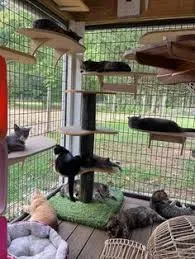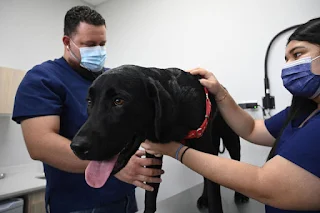I hope this post finds you and your pets well. Today, I want to chat about something that's been on my mind lately. It's about our cats and the impact they might be having on the great outdoors. Don't get me wrong, I adore cats.I have had cats on and off my whole life. But, I've been reading up on how outdoor cats affect the local ecosystem, and, honestly, it's been an eye-opener.
First off, did you know that domestic cats are considered one of the top human-introduced threats to wildlife? Surprising, right? Our cuddly companions, when they roam outside, can become efficient predators. They often hunt birds, small mammals, reptiles, and insects. This isn't just about the occasional bird or mouse; it's about the broader impact on local wildlife populations.
The numbers are pretty staggering. Studies suggest that in the United States alone, free-ranging domestic cats kill billions of birds and mammals each year. These aren't just random numbers; they're a significant hit to biodiversity. Birds, in particular, are at risk. Many bird species are already struggling due to habitat loss and climate change, and predation by cats adds another layer of stress.
Now, I know what you might be thinking – cats are natural hunters, right? It's in their nature. And that's true. But the problem is, our neighborhoods aren't natural environments. They're ecosystems heavily influenced by human activity, where some species may already be at a disadvantage. When we add a large number of predators (i.e., our pet cats) to the mix, it can throw things off balance.
So, what can we do as responsible pet owners? Well, there are a few things. Keeping our cats indoors is a straightforward solution. It not only protects wildlife but also keeps our pets safe from traffic, diseases, and other dangers. If you're worried about your cat getting bored indoors, there are tons of ways to keep them entertained – think climbing structures, interactive toys, and even leash training for supervised outdoor time.
Another option is a 'catio' – an enclosed outdoor space that allows your cat to enjoy the outdoors without posing a risk to wildlife. It's like a mini-adventure zone for them. And, if you're into DIY projects, building a catio can be a fun weekend activity.
In closing, I just want to say that being a pet owner is a joy and a responsibility. Our choices can have a wider impact than we realize. By being mindful of how our pets interact with the world around them, we can make a positive difference for all creatures – big and small.
Let's keep the conversation going. What are your thoughts on indoor vs. outdoor cats? Any tips on keeping indoor cats happy and active? Share your stories and ideas – I'd love to hear them!























